Lingyin Temple and Feilai Feng: Nature Meets Spirituality in Picturesque Hangzhou
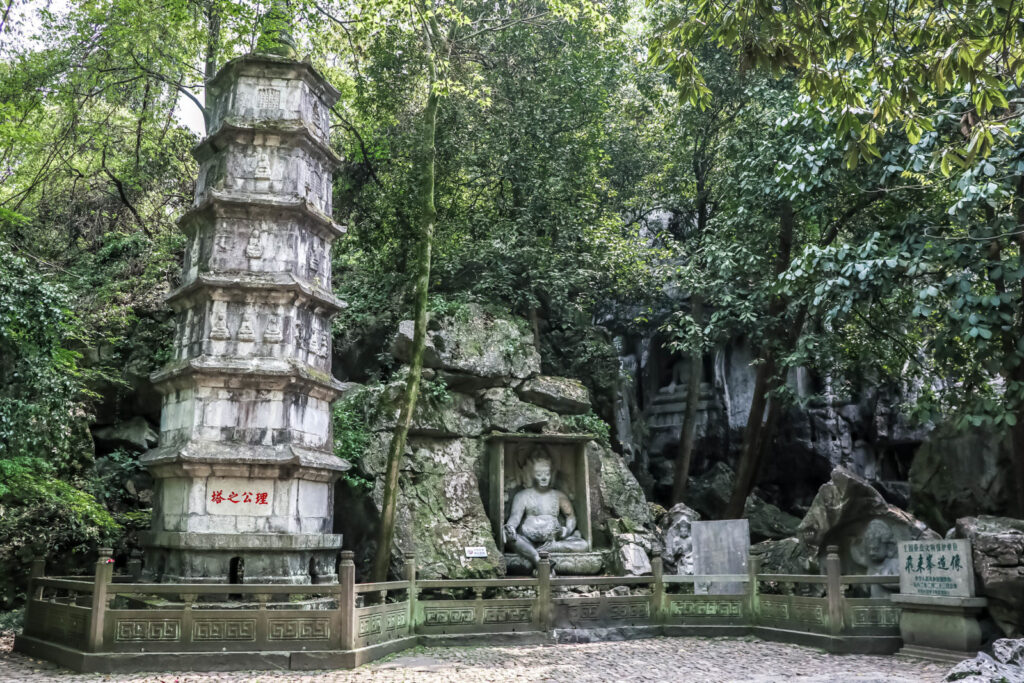
An Essential Guide to Visiting Lingyin Temple And Feilai Feng
Nestled amidst the lush hills and serene landscapes of Hangzhou, Lingyin Temple and Feilai Feng stand as a testament to China’s rich spiritual heritage and artistic prowess. Dating back to 328 AD, Lingyin Temple, or “Temple of the Soul’s Retreat,” is one of the largest and most celebrated Buddhist temples in the country. Its intricate architecture and serene ambiance invite visitors to explore the depths of Buddhist culture while basking in the tranquility of nature.
Adjacent to the temple lies Feilai Feng, or “Peak Flown from Afar,” a captivating site adorned with over 300 ancient Buddhist rock carvings. As you wander through this historic area, you’ll be transported back in time, witnessing the artistry and devotion that shaped these stunning works. The combination of spiritual exploration and artistic admiration makes this site an unmissable destination for travelers seeking a deeper connection to Chinese history and culture.
Whether you are drawn by the spiritual allure of the temple, the breathtaking natural scenery, or the intricate carvings that tell stories of ages past, a visit to Lingyin Temple and Feilai Feng promises an enriching experience that will linger in your memory long after you leave. Prepare to embark on a journey through time and tradition, where every corner reveals a new aspect of Hangzhou’s cultural tapestry.
In This Guide
- An Essential Guide to Visiting Lingyin Temple And Feilai Feng
- The Rich History and Legends of Lingyin Temple And Feilai Feng
- Main Highlights: What You Absolutely Can’t Miss
- Planning Your Visit: A Practical Guide
- Tickets: Prices, Booking, and Tips
- How to Get There: A Complete Transportation Guide
- Local Cuisine and Accommodation Nearby
- Frequently Asked Questions
- Final Thoughts on Your Trip
The Rich History and Legends of Lingyin Temple And Feilai Feng
Nestled amidst the lush greenery and rolling hills of Hangzhou, Lingyin Temple is a testament to the deep-rooted traditions of Buddhism in China. Founded in 326 AD during the Eastern Jin Dynasty, this sacred site has endured the test of time, evolving through centuries while remaining a significant pilgrimage destination for devotees and visitors alike. The temple’s name, which translates to “Temple of the Soul’s Retreat,” aptly reflects the serene atmosphere that envelops it, making it a haven for reflection and spiritual connection.
Over the years, Lingyin Temple has undergone multiple renovations and expansions, particularly during the Song and Qing dynasties, which have contributed to its current grandeur. The architecture showcases a beautiful blend of styles, marked by intricate carvings, vibrant colors, and towering halls that are rich in both artistic and historical value. The temple complex consists of five main halls, where visitors can marvel at an impressive collection of Buddhist statues and relics, including the towering statue of Sakyamuni Buddha, which stands at a remarkable 24.8 meters tall. This wooden statue, carved from 24 pieces of camphor wood, is one of the tallest of its kind in China and draws admiration from all who behold it.
Adjacent to Lingyin Temple is Feilai Feng, or “Peak Flown from Afar,” a site equally steeped in history and legend. This picturesque peak is renowned for its ancient grottoes, which house over 300 meticulously carved Buddhist figures, some dating back more than a millennium. As you wander through these atmospheric caves, you might find yourself transported to a distant past, where artisans dedicated their craft to immortalize their faith in stone. The legends surrounding Feilai Feng add to its mystique; one popular tale suggests that the peak was once a mountain in India that flew to its current location in Hangzhou to honor the arrival of Buddhist teachings.
Together, Lingyin Temple and Feilai Feng create a captivating journey through time, blending spirituality, artistry, and nature in a way that enchants every visitor. The fragrant incense, the sound of rustling leaves, and the distant echoes of chanting monks combine to create a deeply peaceful and reflective environment, inviting travelers to pause and contemplate the rich history that surrounds them.
Whether you are a spiritual seeker, a history enthusiast, or simply a curious traveler, a visit to Lingyin Temple and Feilai Feng promises an enriching experience that goes beyond mere sightseeing. Here, you can connect with the ancient traditions of Buddhism, appreciate the incredible craftsmanship of the past, and bask in the natural beauty that defines this remarkable corner of China.
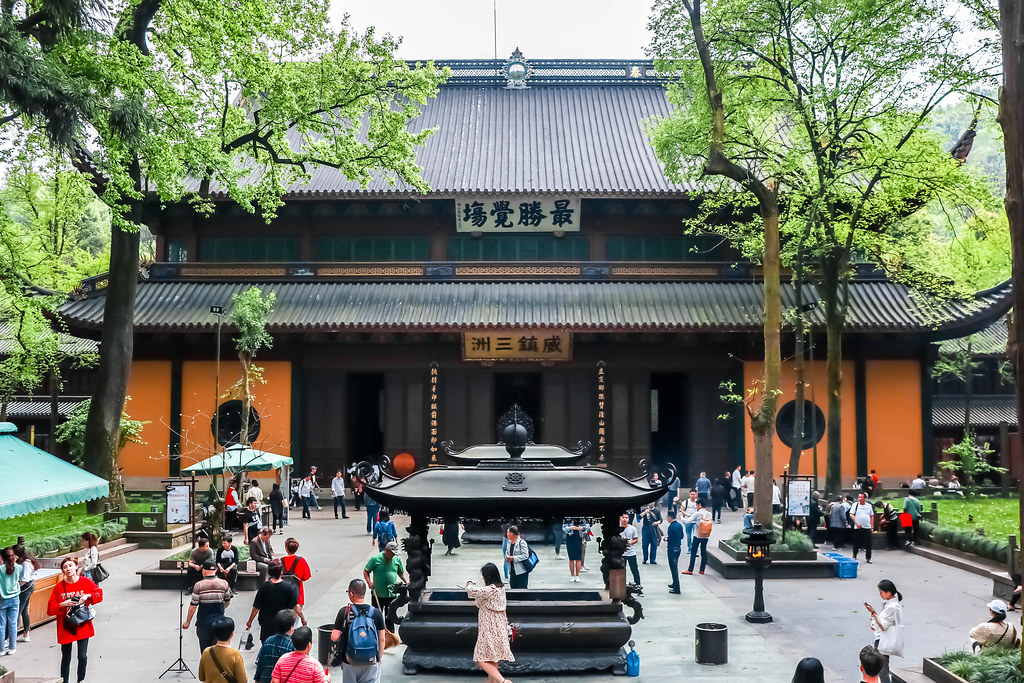
Lingyin Temple And Feilai Feng.
Main Highlights: What You Absolutely Can’t Miss
Nestled in the lush hills surrounding Hangzhou, Lingyin Temple and Feilai Feng offer a captivating glimpse into China’s rich Buddhist heritage. This sacred site is not just a destination; it’s an experience that combines spirituality, history, and stunning natural beauty. Here are the key highlights you absolutely can’t miss during your visit:
Lingyin Temple: A Spiritual Sanctuary
1. The Grand Halls
The temple complex features five main halls, each radiating a unique charm and significance. The Hall of Four Heavenly Kings, the first hall you will encounter, is renowned for its colossal Laughing Buddha statue and the ancient Skanda Buddha, which dates back over 800 years. These impressive figures are sure to leave you in awe as you take in the intricate carvings and beautiful decorations.
2. Majestic Mahavira Hall
Don’t miss the Mahavira Hall, home to the towering Sakyamuni Buddha statue, standing at an astonishing 24.8 meters. This monumental wooden sculpture, crafted from 24 pieces of camphor wood, is one of the tallest of its kind in China and an absolute highlight of your visit.
3. Serene Atmosphere
As you wander through the halls, take a moment to breathe in the fragrant incense that fills the air and admire the tranquil surroundings. The combination of ancient relics, lush greenery, and the distant sounds of chanting creates a spiritual ambiance that invites reflection and peace.
Feilai Feng: A Journey Through Time
4. Buddhist Rock Carvings
Just a short walk from Lingyin Temple, the Feilai Feng Grottoes beckon with their historical significance. Home to over 300 Buddhist rock carvings, some of which date back more than 1,000 years, these grottoes provide a fascinating window into the artistic expressions of ancient Chinese Buddhism. As you traverse the atmospheric caves, you’ll feel as though you’ve stepped back in time.
5. Scenic Views
Climbing up the paths around Feilai Feng rewards you not only with a sense of adventure but also with breathtaking views of the surrounding hills and the temple complex below. Capture these moments with your camera, as the natural beauty of this area is truly stunning.
Practical Tips for Your Visit
- Combined Tickets: Purchase a combo ticket for both Lingyin Temple and Feilai Feng at the entrance to the scenic area, making your visit seamless and convenient.
- Transportation: Given the hilly terrain, consider taking a taxi or bus to the site. It’s located about 3.5 km from the West Lake area, and public transport options are readily available.
- Timing: Allocate at least two hours for your visit to soak in the sights, sounds, and spiritual atmosphere fully. The temple is open from 7:00 AM to 6:00 PM, allowing ample time for exploration.
Conclusion
Lingyin Temple and Feilai Feng are more than just tourist attractions; they are sacred spaces that offer a profound connection to China’s spiritual and cultural heritage. Whether you’re an avid history buff, a photography enthusiast, or someone seeking tranquility, this enchanting site promises an unforgettable experience in the heart of Hangzhou. Don’t miss the opportunity to immerse yourself in this extraordinary journey through time and faith.
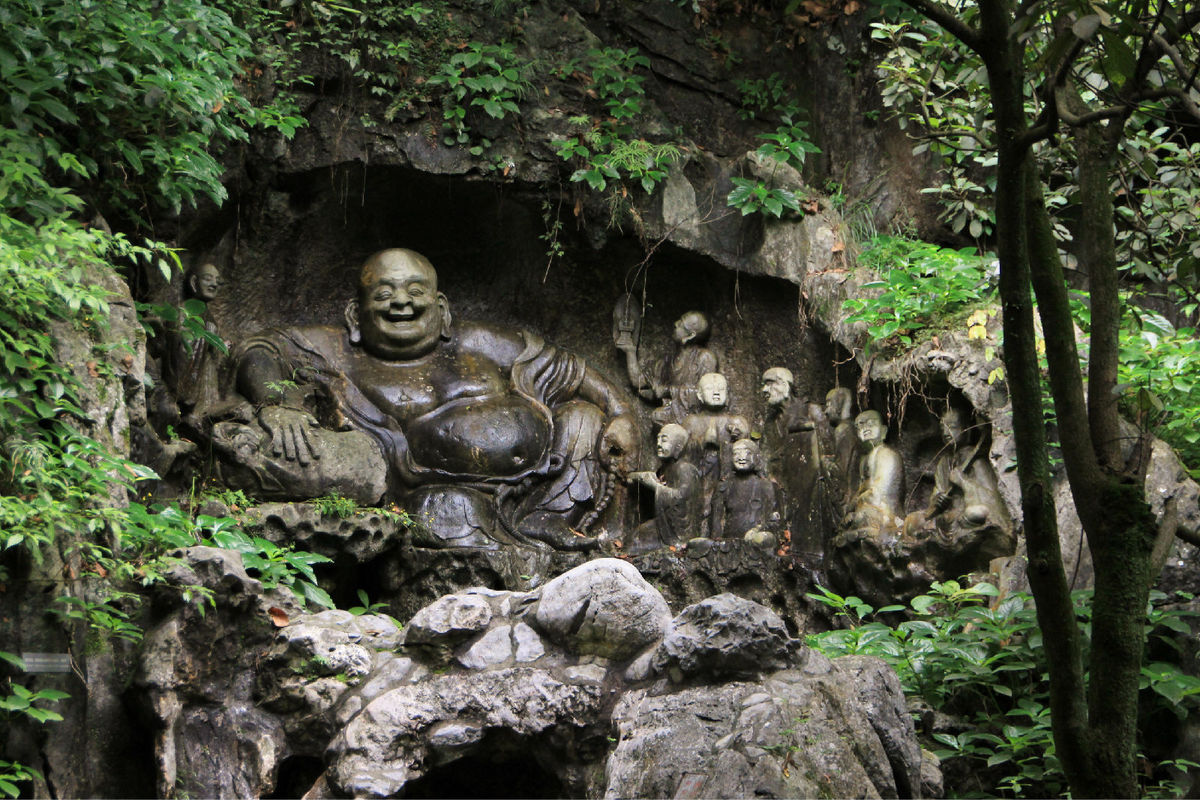
Lingyin Temple And Feilai Feng.
Planning Your Visit: A Practical Guide
When embarking on a journey to the enchanting Lingyin Temple and Feilai Feng Grottoes in Hangzhou, you are stepping into a world steeped in history, spirituality, and stunning natural beauty. This guide will help ensure that your visit is as smooth and rewarding as possible.
Getting There
Location: Lingyin Temple is situated about 3.5 kilometers west of the picturesque West Lake in Hangzhou. Given its hilly terrain, it’s advisable to travel by car or bus. Public transportation is readily available, with numerous bus routes connecting various points around West Lake to the temple. A taxi or car ride typically takes between 20 to 40 minutes, depending on traffic.
Opening Hours and Admission Fees
Hours of Operation:
– Lingyin Temple: 7:00 AM – 6:00 PM
– Feilai Feng Scenic Area: Same as above
Ticket Prices:
– Lingyin Temple: 30 RMB
– Feilai Feng Scenic Area: 45 RMB
– Combo Ticket: 75 RMB (includes entry to both sites)
It’s wise to purchase your tickets at the entrance to Feilai Feng, as this is where you can buy the combo tickets as well.
What to Expect
Duration of Visit: Plan to spend approximately 2 hours exploring both Lingyin Temple and Feilai Feng. However, if you wish to soak in the serene atmosphere and take your time with the statues and carvings, you may want to allocate more time.
Lingyin Temple: Founded in 328 AD, this remarkable temple complex is one of the largest and most prosperous in China. The architecture showcases a blend of Song dynasty and Qing-era styles, with five main halls adorned with vibrant decorations. Key highlights include:
– Hall of Four Heavenly Kings: Home to a large Laughing Buddha statue and an ancient Skanda Buddha statue.
– Mahavira Hall: Features a towering 24.8-meter statue of Sakyamuni Buddha, which is one of the tallest wooden statues in China.
Feilai Feng Grottoes: Just a short walk from the temple, this site boasts over 300 Buddhist rock carvings, some dating back over a millennium. The atmospheric caves transport you back in time, offering a unique glimpse into ancient Buddhist artistry.
Tips for Your Visit
-
Wear Comfortable Footwear: The temple grounds and grottoes involve quite a bit of walking and some elevation changes. Comfortable shoes will enhance your experience.
-
Respect the Sacred Space: Lingyin Temple is a place of worship. Be mindful of others and maintain a respectful demeanor, especially in prayer areas.
-
Photography: While you are welcome to take photos, be considerate of those who are there to pray or meditate.
-
Best Time to Visit: Early mornings or late afternoons are ideal for a quieter experience, as the temple can get crowded during peak hours. Spring and autumn are particularly pleasant seasons to visit due to mild weather.
-
Nearby Attractions: Consider pairing your visit with a trip to West Lake, famous for its scenic beauty and cultural significance, or explore local tea villages to experience Hangzhou’s renowned tea culture.
Accessibility
For those with mobility issues, it may be challenging to navigate the hilly terrain. Wheelchair access is limited, especially in the grotto areas. Check with local tourist services for specific accommodations.
Conclusion
A visit to Lingyin Temple and Feilai Feng Grottoes offers a profound journey through China’s rich Buddhist heritage and breathtaking landscapes. With this practical guide, you are well-prepared to immerse yourself in the spiritual and cultural treasures awaiting you in Hangzhou. Enjoy your exploration!
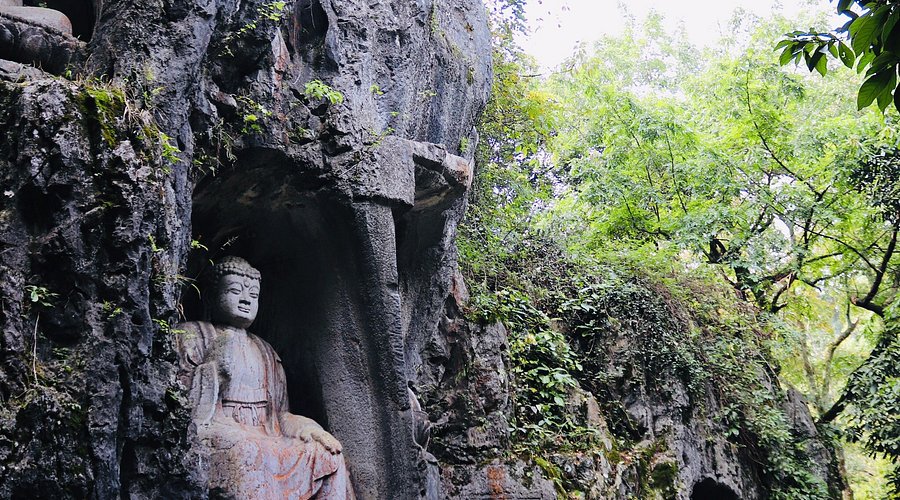
Lingyin Temple And Feilai Feng.
Tickets: Prices, Booking, and Tips
Visiting the enchanting Lingyin Temple and the captivating Feilai Feng Grottoes is a highlight for any traveler exploring Hangzhou. Here’s what you need to know about ticket prices, booking options, and some handy tips for your visit.
Ticket Prices
- Lingyin Temple Entrance Fee: 30 RMB
- Feilai Feng Scenic Area Fee: 45 RMB
- Combo Ticket (Access to both Lingyin Temple and Feilai Feng): 75 RMB
Opening Hours
Both attractions are open daily from 7:00 AM to 6:00 PM, allowing ample time for visitors to soak in the serene atmosphere and explore the intricate carvings and statues.
Booking Information
Tickets can be conveniently purchased at the entrance of the Feilai Feng Scenic Area. If you prefer to streamline your visit, consider buying the combo ticket, which offers access to both the temple and the grottoes at a discounted rate. This is especially beneficial for those planning to explore both sites in a single trip.
Tips for Your Visit
-
Plan Your Duration: Allocate about 2 hours for a thorough visit. This will give you enough time to appreciate the stunning architecture of the temple and wander through the ancient grottoes.
-
Transportation: Lingyin Temple is approximately 3.5 km from the western shores of West Lake. Due to its hilly location, it’s advisable to travel by taxi or bus. Various bus routes serve the area, and a taxi ride will take about 20 to 40 minutes, depending on your starting point.
-
Best Time to Visit: Early morning or late afternoon can be the best times to enjoy a quieter experience, as these periods tend to attract fewer visitors.
-
Cultural Respect: As this is a sacred site, observe local customs. Dress modestly, and be respectful of worshippers and their practices.
-
Photography: While photography is encouraged in many areas, always check for signs indicating restrictions, especially in places of worship.
By keeping these details in mind, you’re sure to have a rewarding and enriching experience when visiting Lingyin Temple and Feilai Feng in Hangzhou. Enjoy your journey into China’s spiritual heritage!
How to Get There: A Complete Transportation Guide
Getting to Lingyin Temple and Feilai Feng Grottoes in Hangzhou is a straightforward process, thanks to the city’s well-connected transportation options. Here’s everything you need to know to ensure a smooth journey to this magnificent site.
By Public Transport
1. Bus:
Hangzhou’s public bus system is extensive and a convenient way to reach Lingyin Temple. Several bus routes service the area, making it accessible from various parts of the city, especially around West Lake. The most common routes are:
- Route 7: This bus runs frequently from the West Lake area directly to Lingyin Temple.
- Route 27: Another option that connects with major tourist spots in Hangzhou.
Once you arrive at the bus stop, follow the signs leading to the temple entrance, which is approximately a 10-minute walk from the bus stop.
2. Metro:
While there isn’t a direct metro line to Lingyin Temple, you can take Line 1 to Longxiangqiao Station. From there, switch to a bus (Route 7 or 27) to complete your journey.
By Taxi or Ride-Hailing Services
For a more direct and comfortable experience, consider taking a taxi or using ride-hailing apps like Didi, which is widely used in China. Depending on your starting point, a taxi ride to Lingyin Temple from the West Lake area typically takes about 20 to 40 minutes, depending on traffic conditions.
By Private Car
If you prefer to explore at your own pace, renting a car or booking a private driver can be an excellent choice. Various car rental services are available in Hangzhou, and having your own vehicle allows you to visit the temple and surrounding attractions without the hassle of public transport.
Walking or Biking
Though Lingyin Temple is about 3.5 km (2.2 miles) from the western banks of West Lake, the hilly terrain can make walking or biking a bit challenging, especially for those not accustomed to steep inclines. However, if you’re up for a scenic hike and the weather is pleasant, the journey can be quite rewarding. Keep in mind that parking is limited at the temple, so it’s best to arrive early if you decide to drive.
Visiting Tips
- Tickets: You must purchase tickets at the entrance to the Feilai Feng Scenic Area, which also includes access to Lingyin Temple. Combo tickets are available for around 75 RMB.
- Opening Hours: The temple is open from 7:00 AM to 6:00 PM, so plan your visit accordingly to allow ample time to explore both attractions.
- Duration: Allocate at least 2 hours for your visit to fully appreciate the serene atmosphere and stunning architecture.
With this guide, navigating your way to Lingyin Temple and Feilai Feng should be a breeze, leaving you to focus on soaking in the beauty and tranquility of one of China’s most revered Buddhist sites. Safe travels!
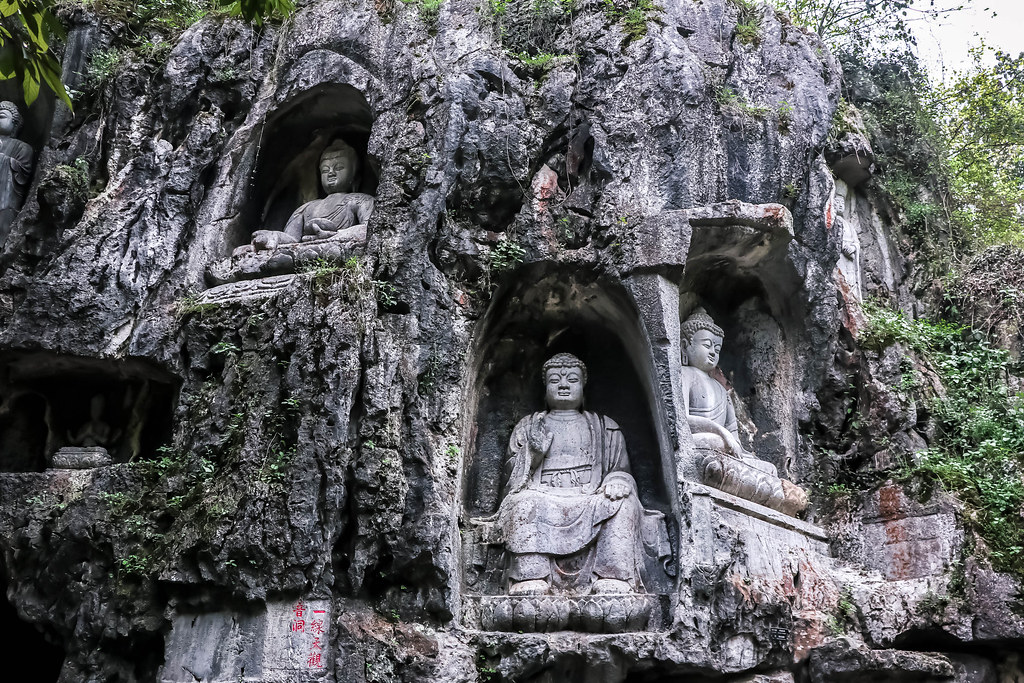
Lingyin Temple And Feilai Feng.
Local Cuisine and Accommodation Nearby
When exploring the serene surroundings of Lingyin Temple and Feilai Feng, you’ll find a delightful array of local cuisine and charming accommodations that enhance your visit to this historic site.
Dining Options
-
Lingyin Vegetarian Restaurant (灵隐素食馆)
Located within the temple grounds, this restaurant offers a tranquil dining experience with a menu focused on vegetarian dishes inspired by Buddhist traditions. Try their delicate tofu dishes and seasonal vegetable stir-fries, all prepared with fresh, local ingredients. The peaceful ambiance complements the spiritual setting perfectly. -
Arowana Restaurant (鳝鱼头饭店)
Just a short stroll from the temple, Arowana is known for its Hangzhou-style dishes, particularly its famous eel head rice. The restaurant offers a cozy atmosphere and a selection of local delicacies, making it a great spot for travelers looking to experience authentic flavors in the region. Don’t forget to pair your meal with a cup of Hangzhou’s renowned Longjing (Dragon Well) tea. -
Huanglong Restaurant (黄龙饭店)
Situated near the entrance to Feilai Feng, Huanglong is popular among tourists and locals alike. The menu boasts a variety of dishes, including the must-try West Lake fish in vinegar sauce. The decor, inspired by traditional Chinese aesthetics, provides a lovely backdrop to your dining experience.
Where to Stay
-
Four Seasons Hotel Hangzhou at West Lake
Just a 15-minute drive from Lingyin Temple, this luxurious hotel offers a serene retreat amidst beautiful gardens and lakes. With elegant rooms, a world-class spa, and exquisite dining options, it’s perfect for travelers seeking comfort and tranquility after a day of exploration. -
West Lake State Guest House
Located close to both Lingyin Temple and West Lake, this guest house offers a unique blend of traditional Chinese architecture and modern amenities. The tranquil setting and lush gardens provide a peaceful oasis, ideal for unwinding after a day of sightseeing. -
Hangzhou Blossom Water Museum Hotel
A little further out but worth the trip, this hotel offers a unique experience with themed rooms and a focus on wellness. Its proximity to nature and the nearby tea plantations allows for a refreshing escape. Enjoy the spa facilities or take part in tea-tasting sessions to immerse yourself in local culture.
After a fulfilling day of exploring the spiritual wonders of Lingyin Temple and Feilai Feng, these dining and accommodation options will ensure your experience in Hangzhou is both memorable and delicious. Whether you’re indulging in vegetarian delights or savoring local specialties, you’ll find the perfect complement to your journey through this enchanting region.
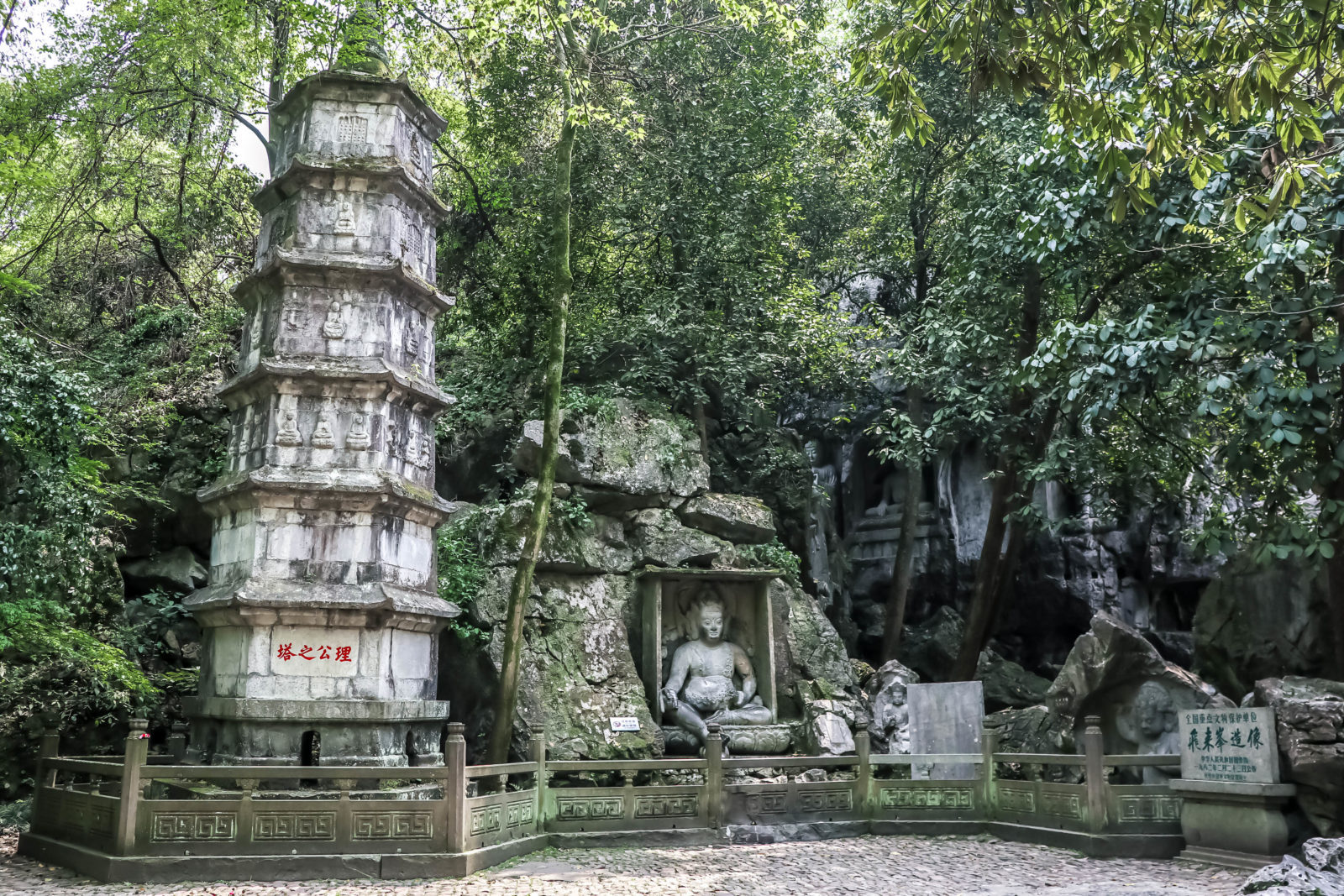
Lingyin Temple And Feilai Feng.
Frequently Asked Questions
-
What are the opening hours for Lingyin Temple and Feilai Feng?
Lingyin Temple and Feilai Feng are open daily from 7:00 AM to 6:00 PM. Make sure to plan your visit accordingly, as the temple complex is extensive and deserves ample time for exploration. -
How much does it cost to visit Lingyin Temple and Feilai Feng?
Entrance fees are as follows: 30 RMB for Lingyin Temple, 45 RMB for the Feilai Feng Scenic Area, or 75 RMB for a combination ticket that grants access to both. Tickets can be purchased at the entrance to the Feilai Feng Scenic Area. -
How can I get to Lingyin Temple from West Lake?
Lingyin Temple is located approximately 3.5 km west of West Lake. The best ways to reach the temple are by car, taxi, or bus. Several bus routes connect the area, and a journey by taxi typically takes between 20 to 40 minutes, depending on traffic. -
How long should I plan to spend at Lingyin Temple and Feilai Feng?
A visit to both attractions typically takes around 2 hours. However, if you enjoy taking your time to explore the intricate details of the temple and grottoes, you may want to allocate more time for a leisurely experience. -
Are there any guided tours available?
Yes, various guided tours are available that include visits to Lingyin Temple and Feilai Feng. These tours often provide additional insights into the history and significance of the sites, making your visit even more enriching. -
Is there any dress code I should be aware of?
While there is no strict dress code, it is advisable to dress modestly when visiting religious sites like Lingyin Temple. Comfortable clothing and shoes are recommended, especially since you may be walking on uneven terrain. -
Can I take photos inside Lingyin Temple?
Photography is generally permitted in most areas of Lingyin Temple, but be respectful of the spiritual atmosphere. It’s best to avoid taking pictures during prayer times and in areas where signs indicate restrictions. -
What should I expect in terms of crowd levels?
Lingyin Temple is a popular destination for both tourists and locals, especially during weekends and holidays. To avoid large crowds, consider visiting on weekdays or early in the morning.
Final Thoughts on Your Trip
As you reflect on your visit to Lingyin Temple and Feilai Feng, allow the serene beauty and rich spirituality of this remarkable site to linger in your heart. Nestled amidst lush hills, this ancient temple complex offers a unique glimpse into the profound history of Buddhism in China, with its stunning architecture and awe-inspiring statues compelling you to pause and contemplate.
Strolling through the intricate halls, inhaling the fragrant incense, and marveling at the intricate rock carvings of Feilai Feng, you become part of an ancient narrative—a story that has captivated visitors for centuries. Whether you’re drawn to the tranquility of the environment or the historical significance of the art and architecture, Lingyin Temple and Feilai Feng offer a sanctuary for reflection and inspiration.
As you leave this sacred haven, carry with you the peace and perspective gained from your experience. Remember that each step you took among the ancient relics and natural beauty is a testament to the timeless connections we share with the past. May your journey continue to unfold as beautifully as the lotus blossoms that grace the peaceful grounds of this extraordinary destination. Safe travels!